or four years I wrote a column for Texas Monthly called the Manual, an instructional page meant to teach both native and transplanted Texans how to be better stewards of our singular culture. Maybe you knew how to fish, but could you tie a Texas rig? Maybe you could hunt, but could you bag a javelina? I two-stepped across a lot of territory in those 48 pieces, but I always felt there was more to add. People need to know how to talk like a Texan! Cook like a Texan! Travel like a Texan! I touch on all this and more in my new book, How to Be a Texan: The Manual, and here you’ll find a small sampling of the topics I cover. Now, órale, y’all, we’re fixin’ ta learn a thing or two about sounding, looking, and, most important, feeling like a Texan. Disclaimer: This is not intended to be your sole resource, for there is no substitute for learning skills in the flesh from an experienced Texan. How to Be a Texan: The Manual excerpt courtesy of University of Texas Press.
Talking Like a Texan
Essential vocabulary (and a little Spanglish, por supuesto).

Blue norther
A term specific to Texas to describe a cold front that blasts in from the north.
Cattywampus
Out of line, or not quite right.
Fixin’ ta
When someone informs you that he’s “fixin’ ta [insert action here],” he means he’s getting ready to do that thing.
Gully washer
A really heavy, really short storm.
Hi sign
A one-finger wave (the index, not that one in the middle) made when drivers pass one another on country roads. This gesture, which is generally made without ever lifting the hand from the wheel, is a courtesy of the road.
Órale
An exclamation that has many meanings, including “Heck, yes!” or “Okay!” Some people also use it as a way to say “Come on!” or “Hurry up.”
Over yonder, or down yonder
Over there.
Scuchale
Slang for “Move over” or “Scooch over.”
Tump over
To knock something over.
Used to could
This highly ungrammatical phrase is a way to say you used to be able to do something (e.g., “I used to could two-step, but now my knees are all cattywampus”).
Y’all
This second-person pronoun—a contraction of “you” and “all”—is used when talking to two or more people. Sprinkle this word liberally throughout all y’all’s conversations.
Looking Like a Texan
How to buy custom boots.
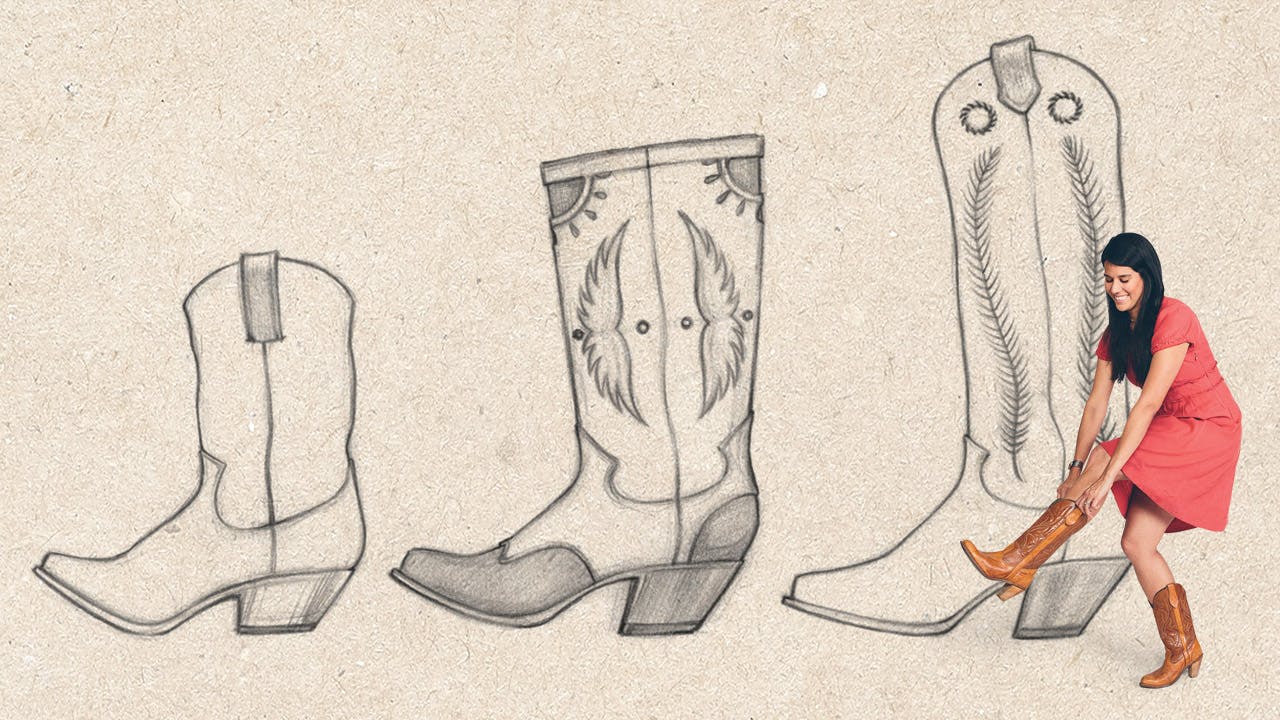
There are few Texas clichés more crystallized than how we dress: ten-gallon hats, cowboy boots, pressed Wranglers—in short, a sartorial personification of the cowboy stereotype. But damn if it don’t look good. The first, ahem, step to dressing like a Texan? Buying custom boots.

Leather
Your quest begins with the leather. The most traditional option is calfskin. Need tough work boots? Elephant, shark, or bull offers durability. Dress boots? Go with lizard, ostrich, or crocodile. And then there’s kangaroo. “The cashmere of leathers,” says Nevena Christi, the co-owner of Rocketbuster Boots, in El Paso, the Boot Capital of the World. “Soft, sturdy—and expensive.”

Height
Determine the height of the shaft. Cowgirls might prefer short-tops, known as “peewees,” which typically come in at ten or eleven inches—all the better to show off those stems—while “buckaroos,” measuring up to twenty inches, protect a working cowboy from brush and bramble. Unless you actually own a horse, stick to the standard: twelve to fourteen inches.
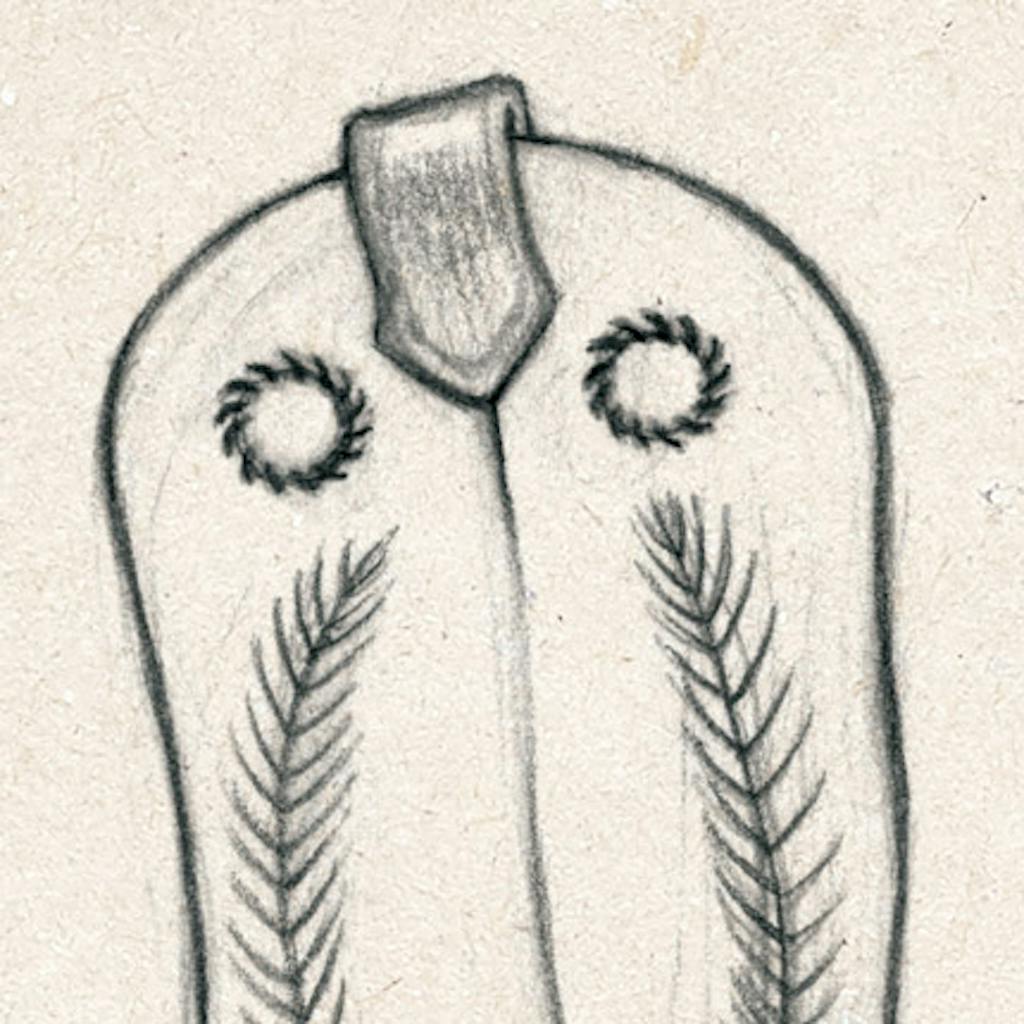
Pulls
Jennifer June, the author of Cowboy Boots: The Art & Sole, will tell you that pulls come in four basic varieties: outside pulls (visible when you lift your cuff), inside pulls (which sit within the boot), mule ears (extra-long decorative loops), or just plain holes. The pulls are practical, but they’re also a place for flair. “Add color, a Texas flag, or your initials,” she suggests.

Design
Stitching is the most common design feature. Request inlays and overlays—colorful cutouts beneath or on top of the leather—or tooling, a luxury option. Customizing can cost $2,500 or more (turnaround time ranges from six weeks to a year), so if you’re spending the money, get fancy with foxing (overlays on the toe or heel), a collar (decorative leather along the top of the boot), or brightly colored piping.
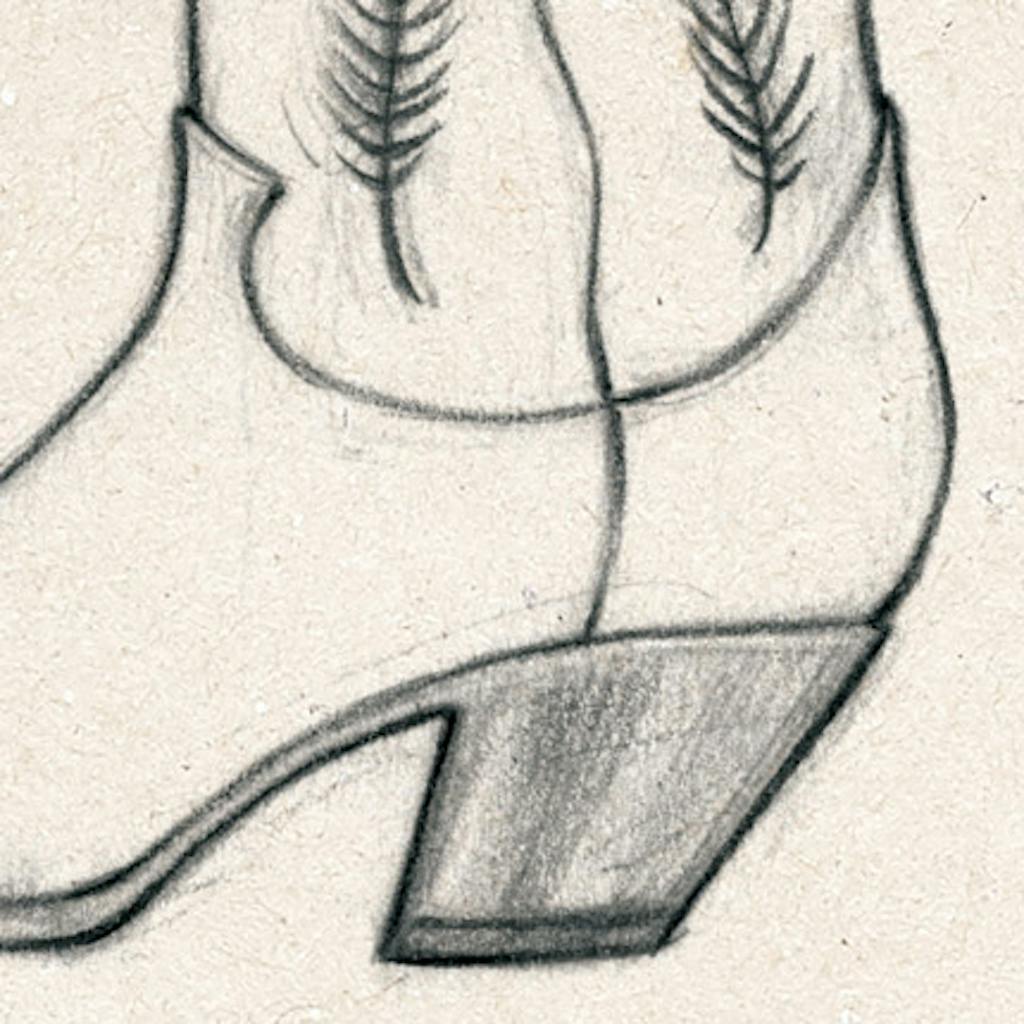
Heel
The average heel comes in at around one and a half inches. But conventions are for ignoring, especially by the fairer sex, who can pull off up to three inches. Most boots are made with underslung heels. “The sharper the angle, the more dramatic your look,” says Scott Wayne Emmerich, the co-founder of the Tres Outlaws Boot Company, in El Paso. Prefer the walking-friendly kind? Get a roper.

Toe
The toe says everything. Pointy is the province of fashionistas and Hollywood; real ranchers gravitate toward a round look. There’s also the box toe and the squared-off French style. But above all, consider your image. Mosey into your local honky-tonk with round toes and you say, “I just broke the new palomino.” Opt for ultra-tapered ends and you probably pronounce “rodeo” “ro-day-o.”
Tending the Ranch
How to wrangle a rattlesnake.
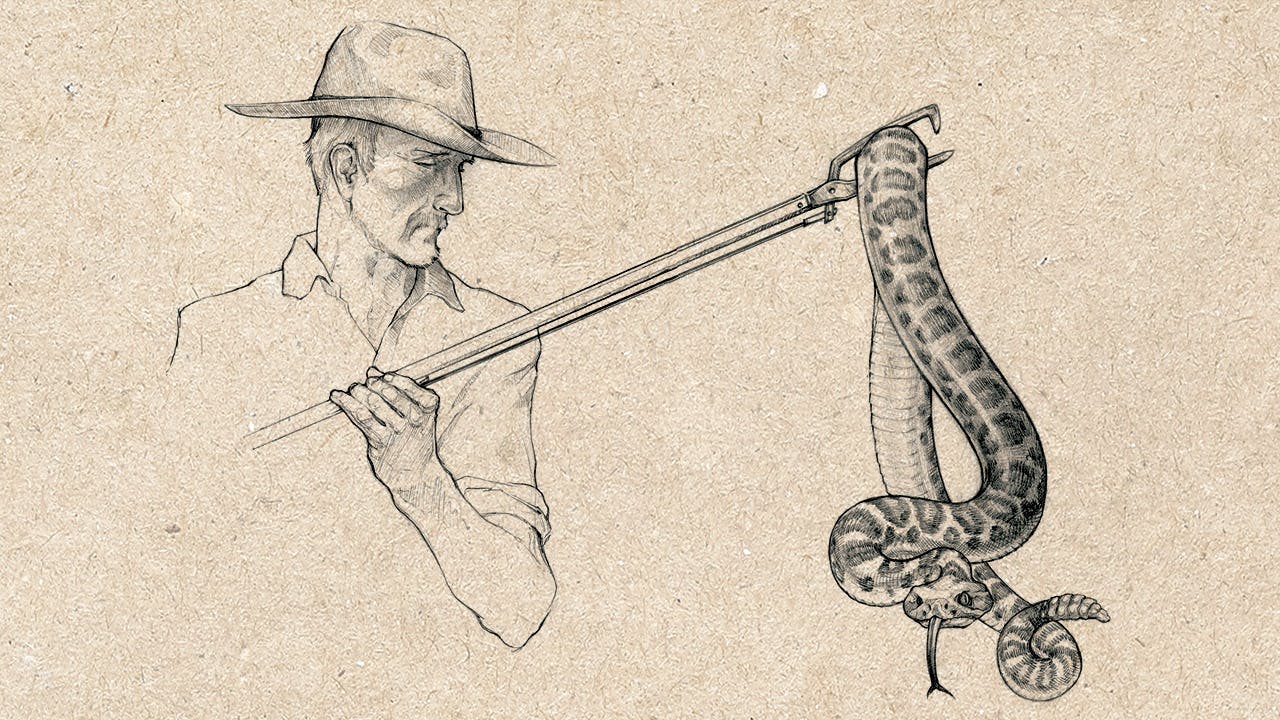
With some ten species and subspecies of rattlesnakes calling our state home, chances are you’ll find yourself face-to-fang sooner or later. “Essentially, if you’re in West Texas, don’t sit down until you’ve checked the ground within a three-foot radius,” says Tom Henderson, a former president of the Sweetwater Jaycees, the organization that hosts the World’s Largest Rattlesnake Roundup. So why wrangle a rattlesnake? Simply put, the catch-and-release method is more humane than a hoe to the head.
The Danger
According to the American International Rattlesnake Museum, in New Mexico, about eight thousand bites from venomous snakes are reported in the United States each year. But don’t say your Hail Marys just yet; less than one percent result in death. Plus, a rattlesnake will usually warn you before it strikes with a low-pitched and unmistakable rattling sound.
The Wrangling
Henderson insists on protective clothing if you’re traipsing around West Texas—leather boots (hard to penetrate) and long pants (preferably jeans). Also, invest in the right equipment. Professional snake handlers use a pinning hook, but amateurs should employ snake tongs, a long bar with a handle and a set of jaws on the other end. Depending on the snake’s length (they range from 36 to 60 inches), use the tongs to grip it around its middle or a third of the way down from its head to limit the striking distance. With your other hand, grab its tail above the rattle and carefully guide the snake into a large, lidded bucket.
The Trophy
If you’re going to dispatch the venomous thing, waste not, want not: have a tanner fashion the skin into a chic accessory, indulge in the delicacy of chicken-fried rattlesnake, or hire a taxidermist to memorialize the snake’s last tango. But don’t allow negative mythology to dictate your actions; snakes, after all, control rodent populations and rodent-borne diseases, so let your bleeding heart beat and release it into the wild.
Rites of Passage
How to shoot a .22.

Numerous rites of passage dot the path to becoming a true Texan, but few are as iconic as learning to fire a rifle. Beginners often train with a .22 caliber, “because there’s minimal recoil, and the gun and its shells are relatively inexpensive,” says Terry Erwin, a former hunter-education coordinator for Texas Parks and Wildlife. When firing guns, safety comes first: point the muzzle in a safe direction, treat the rifle as if it is always loaded, and set up a backstop behind your target. Don’t forget to wear ear and eye protection.
1. Place the butt of the rifle in the pocket between your dominant shoulder and collarbone. Hold the forearm of the rifle with your other hand.
2. Position your body at a 45-degree angle to the target. Plant your feet roughly shoulder width apart or crouch to hold yourself steady.
3. Put your finger on the trigger only when you are ready to fire. Take a breath, let it about halfway out, hold it, and then gently squeeze—don’t slap—the trigger.
4. Erwin advises beginners to load and shoot single bullets. To load a bolt action, raise the bolt, then pull it back as far as it will go, place a bullet into the chamber, slide the bolt forward, and lock it.
5. To aim, adjust the firearm so the front sight (a straight piece of metal at the end of the barrel) falls in the V of the rear sight (a smaller piece of metal with a notch in the middle). Line up the front sight just above the spot you are aiming at.
6. Because .22s are short-range rifles, Erwin recommends standing at a maximum distance of 75 yards from the target, but beginners can start at 30 yards away.
Hunting and Fishing
How to tie a Texas rig.

More than fifty years ago, a fisherman on Lake Tyler speared a plastic worm on a hook in such a way that he anchored the worm and buried the barb. This technique, known as the Texas rig, revolutionized bass fishing. Why? “Before the Texas rig, lures had exposed hooks,” says Wayne Kent, the president of the Tyler-based Creme Lure Company. “If you fished near a brush pile, the hook could burrow in the wood.” Now you can cast into wooded spots that bass love. To tie a Texas rig, you need a plastic worm, a hook, and a bullet weight. Thread the weight, tie the hook to a line, then:

1. Insert the barbed end of the hook into the tip of the worm’s head. Push it down about a quarter of an inch until the barb pokes out.
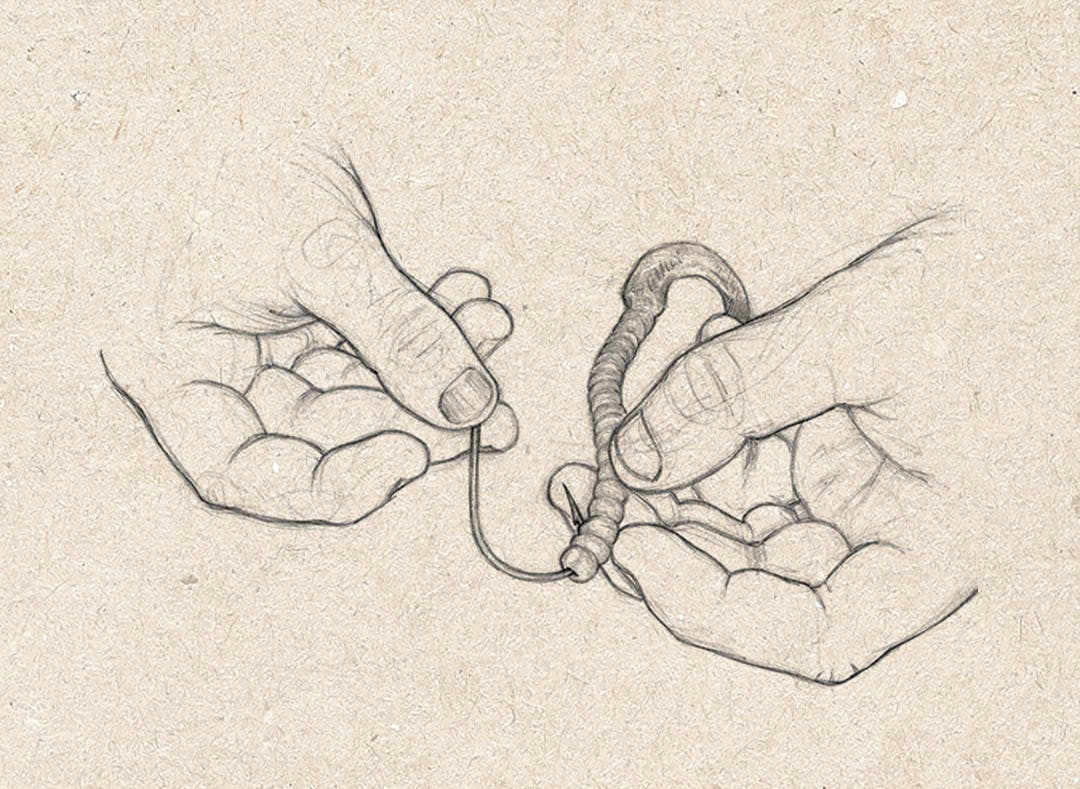
2. Push the hook until the eyelet is flush with the worm, then give the hook half a turn so that it is parallel to the worm.
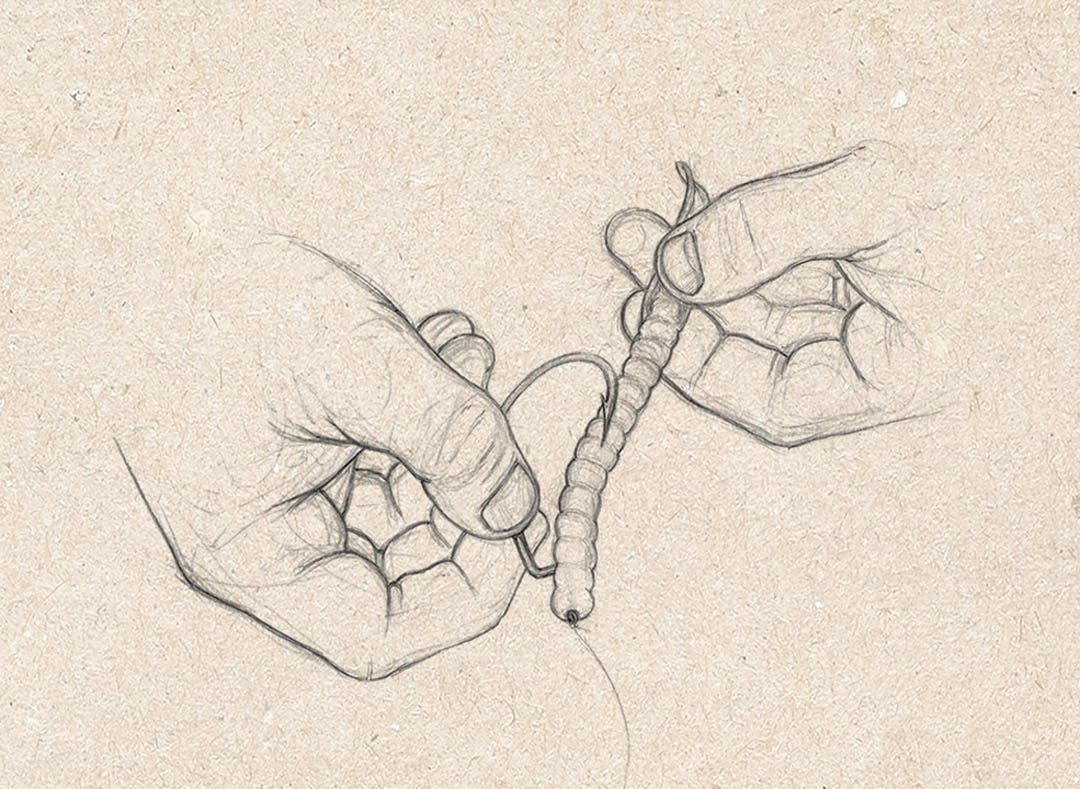
3. Bend the bait and insert the point again.
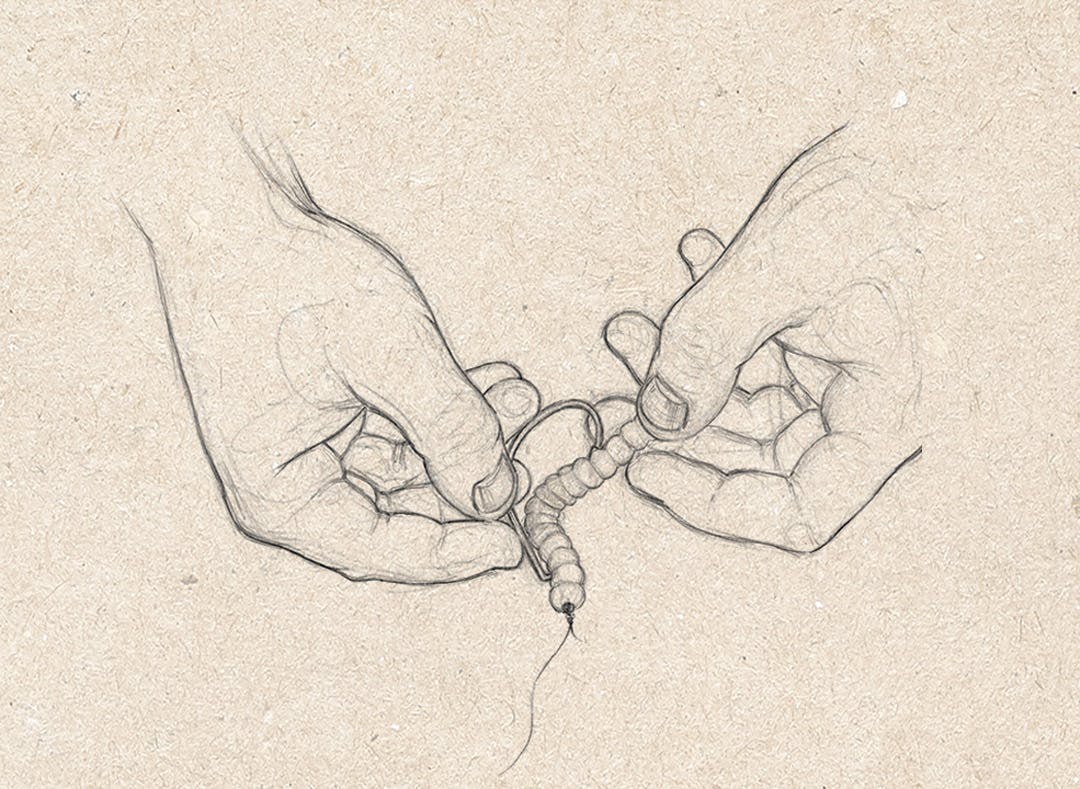
4. The barbed end should now rest flat against the worm, which is impaled by the hook at two different points.
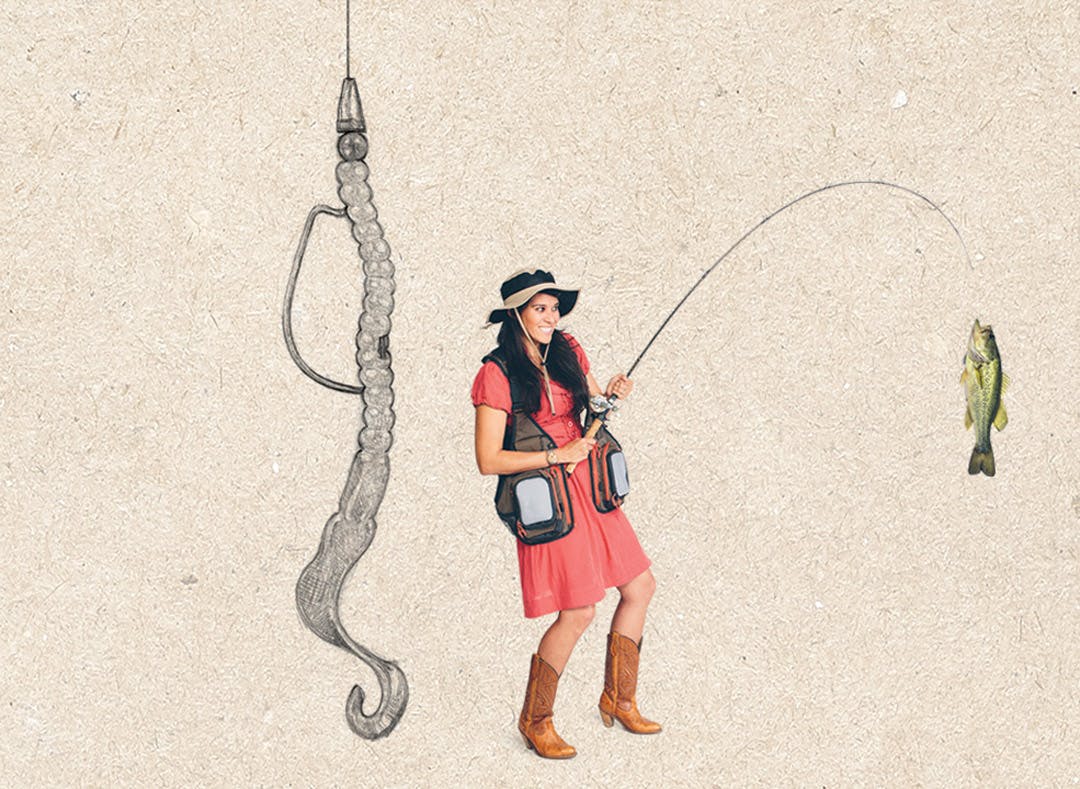
5. Lift the worm between the entry points and bury the barbed end until the point is slightly embedded.
Cooking Like a Texan
How to make a margarita.
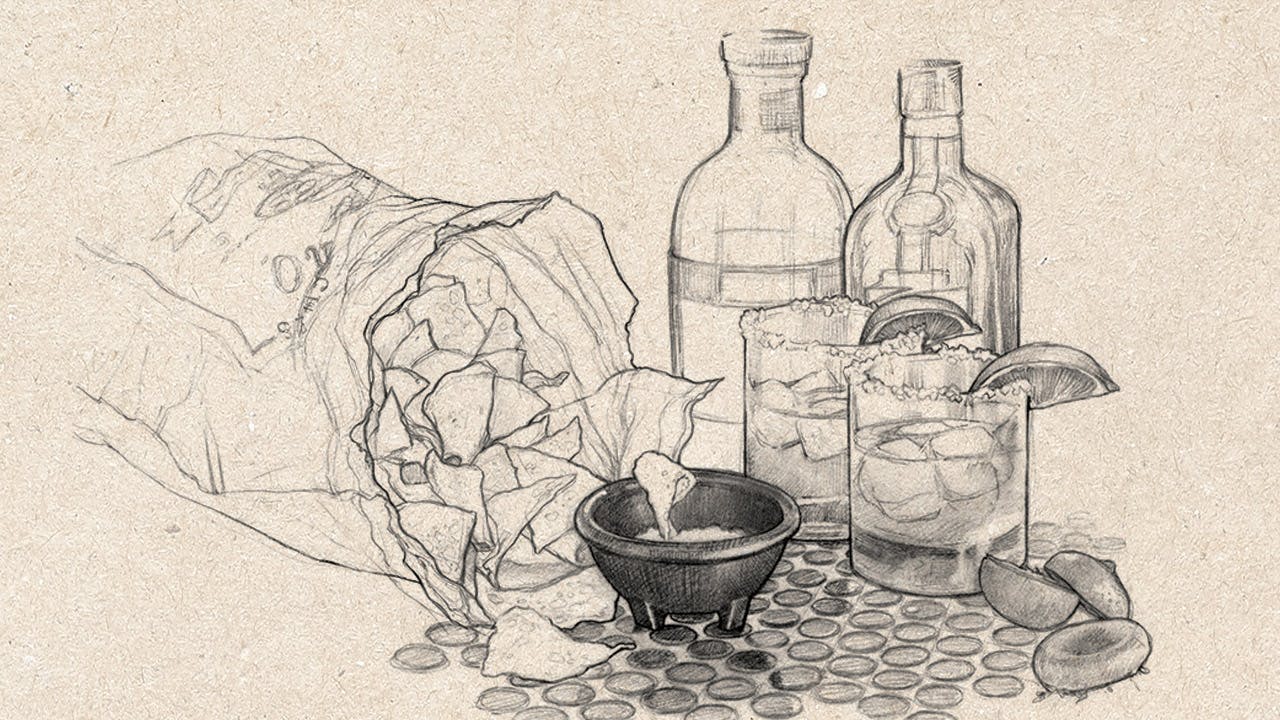
One of the most commonly adulterated and abused cocktails is the margarita. Bartenders frequently try to “put a new twist on an old classic”—mixologist parlance for “fix something that ain’t broke.” And while these variations may get an A for innovation, more often than not they end up ruining a concoction so simple to mix that even the drunkest among us can’t muck it up—no matter how bad it might muck you up.
Makes one drink
2 ounces silver tequila
1 ounce Cointreau
1 ounce fresh juice from Mexican limes
With a lime wedge, moisten the rim of a tumbler. Pour salt onto a plate, then coat the rim. Fill a shaker with the tequila, Cointreau, and lime juice. Shake well. Fill the salted glass with ice, then pour the mixture into the glass and garnish with the lime wedge. (For a straight-up margarita, swap the tumbler for a martini glass, add ice to the shaker, then shake and strain into the glass.)
Relaxing Like a Texan
How to float the river.

One of the most popular ways to blow off steam (almost in the most literal sense) is floating a river, with, naturally, a cooler of beer. Before loading your booze boat, be sure to familiarize yourself with local regulations and then follow these rules of the river:
Pack It In, Pack It Out
Everyone knows our state’s anti-littering motto, which is not just words to live by: it could save you up to $500, the maximum first-offense fine for leaving trash on or in a river. Tubing outfitters often provide mesh bags for empties, but a trash bag poked with a few small holes will work in a pinch.
Know How to Handle your Booze
Many, but not all, local regulations permit alcoholic beverages, with some stipulations: (1) no glass, so leave behind the longnecks and that jar of martini olives, (2) no containers under five fluid ounces (read: Jell-O shots discouraged), and (3) no “volume drinking devices,” the formal term for beer bongs. But don’t forget the koozies.
Your Rock Is Your Anchor
Bring a rope and designate a responsible party to secure the cooler vessel by tying it to himself or herself. (Note that there can be no more than two tubes per person, and flotation devices must be less than five feet in diameter at the narrowest point.) This beer-ferry fairy should be able to navigate rapids while towing extra cargo, have a good arm for tossing, and most important, not Bogart the booze.
The Cooler
One of the biggest changes from the “good ol’ days” is that no family-size ice chests are allowed. Each tuber may bring one 16-quart cooler, which in turn must have a locking mechanism, i.e., a latch or a zipper. And forget the Styrofoam. The law forbids all polystyrene carriers and containers.
Touring Like a Texan
How to visit Cadillac Ranch.

Road trips are a quintessential American pastime for vacationing families who want to cram in as much sightseeing as possible. For years, Route 66, now Interstate 40, served as “the Mother Road” for these journeys, and destinations flourished along the way. One such landmark juts out of the flat Panhandle Plains, just west of Amarillo, an art installation that is one of the most famous roadside attractions in America: Cadillac Ranch. Visitors graffiti the cars (it’s legal), and you too should make your mark.
Spray It to Say It
BYOP, or bring your own paint. If you’re heading west from Amarillo, there’s a Home Depot on the way.
“Turn Right at the Cadillacs”
The cars are on private land, but visitation is encouraged. Park along the south side of I-40, and enter the pasture by walking through the unlocked gate. The cars are roughly 150 yards from the road, but you can’t miss ’em: they’re the ten Cadillacs buried in a field.
Grit and Bear It
Be prepared for some grime and grit. This isn’t a state-funded or oft-tended site. There will likely be litter and trash. (If you really want to earn some karmic brownie points or be a Good Samaritan, you can bring a Hefty bag and be a steward of the land.)
It’s Always Sunny
If you plan to spend some time on your art, remember that you’re going to be working in an open Texas prairie. Wear a hat and some sunscreen.
Beware of Gully Washers
The sun isn’t the only natural element that could be your enemy. Try to avoid going after a heavy rain; the field gets muddy, which is a problem compounded by heavy foot traffic from other tourists.
Selfie-Serving
Second only to paint in importance is a camera. The whole point of making the trek is for the photo op.








